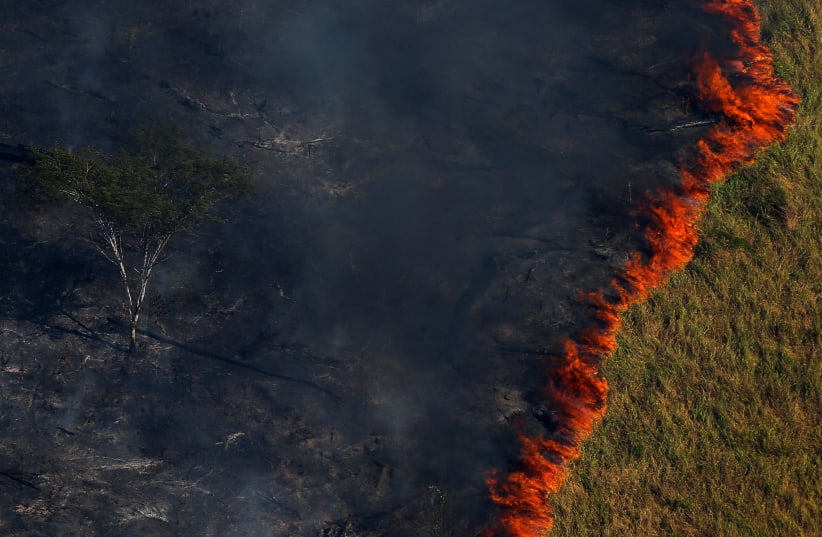Italian astronaut Luca Parmitano tweeted pictures of the Amazon fires from space. Parmitano, 42, is currently on his second mission in the International Space Station.
"The smoke, visible for thousands of kilometres, of tens of human-caused fires in the Amazon forest. #noplanetB #MissionBeyond,” Parmitano wrote.
The smoke, visible for thousands of kilometres, of tens of human-caused fires in the Amazon forest. #noplanetB #MissionBeyond pic.twitter.com/SyoydfJo39
— Luca Parmitano (@astro_luca) August 26, 2019
As Brazil rainforests are burning at a record rate this year, grave concerns about the situation have been expressed by the international community.
Among others, the leaders of the Group of Seven wealthy nations on Monday offered $20 million of emergency aid to help battle wildfires in the Amazon rainforest, a gesture Brazil slammed as colonialist.
Despite record Amazon wildfires and President Jair Bolsonaro previously saying his government lacked the money to fight the blazes, it was not clear if Brazil would accept the G7 offer amid growing international concern.
Prime Minister Benjamin Netanyahu also called Bolsonaro to offer assistance, and the Brazilian leader reportedly accepted, the local paper O Globo reported on Sunday.
According to Brazil's National Institute of Space Research (INPE), fires in the South American country increased by 84% between 2018 and 2019, a large number of which could not be attributed to the dry season or natural phenomena alone.
In addition, the institute also reported a significant increase in deforestation, leading Bolsonaro to fire the institute's director, claiming that they were "made up numbers," Brazilian media reported.
The Amazon is home to an estimated one million indigenous people from up to 500 tribes as well some three million species of plants and animals, including jaguars, sloths, giant otters, river dolphins, howler monkeys, toucans, reptiles, frogs and insects.
Cassandra Gomes-Hochberg and Reuters contributed to this report.
